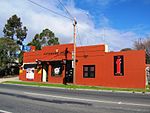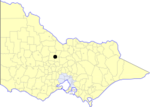St John of God Bendigo Hospital
St John of God Bendigo Hospital is a 167-bed private hospital located in central Victoria.St John of God Health Care acquired Mt Alvernia Mercy Hospital in February 2005, renaming it St John of God Bendigo Hospital. The private hospital services the City of Bendigo and Central Victoria. St John of God Bendigo Hospital is a division of St John of God Health Care, a Catholic not-for-profit health care group, serving communities with hospitals, home nursing, and social outreach services throughout Australia, New Zealand and the wider Asia-Pacific region. Currently the hospital is partially non-functional, and struggles to be viable. An entire ward is unused and the hospital is on unsure footing financially.
Excerpt from the Wikipedia article St John of God Bendigo Hospital (License: CC BY-SA 3.0, Authors).St John of God Bendigo Hospital
Lily Street, Bendigo
Geographical coordinates (GPS) Address Nearby Places Show on map
Geographical coordinates (GPS)
| Latitude | Longitude |
|---|---|
| N -36.761938 ° | E 144.263266 ° |
Address
St John of God Bendigo Hospital
Lily Street 133 - 145
3550 Bendigo (Bendigo)
Victoria, Australia
Open on Google Maps







